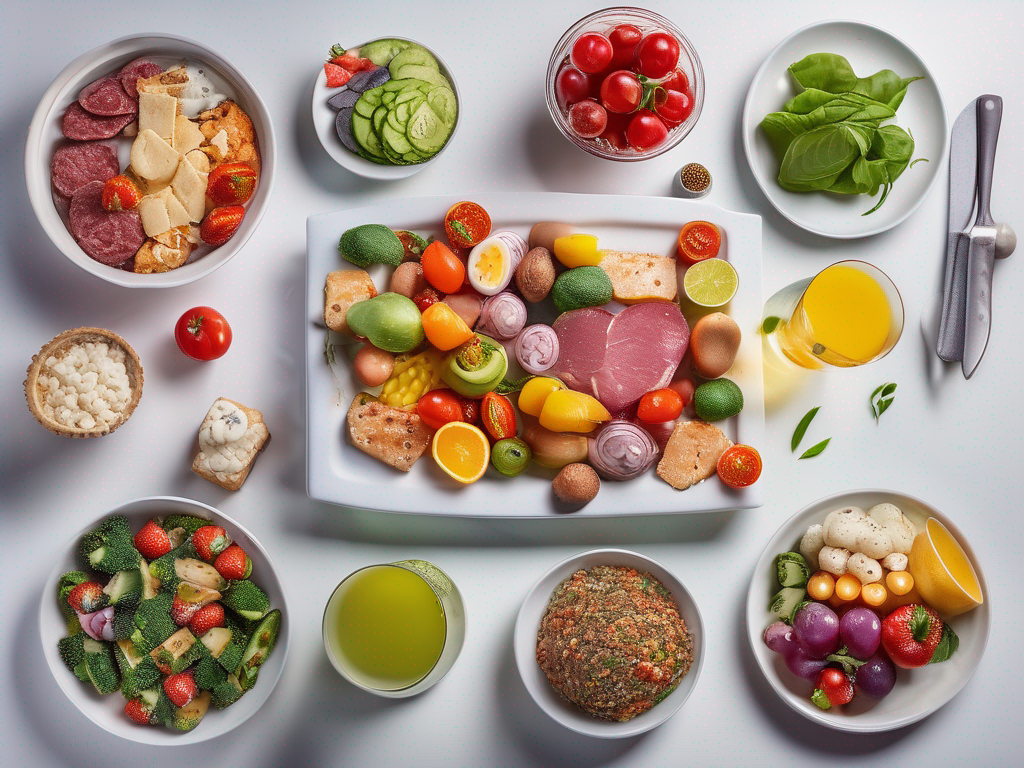
How to Properly Store Breadsticks: Freshly Baked Homemade or from the Bakery
Get Your Free Food Safety Cheat Sheet
30 most common foods with instant answers. Print it and stick it on your fridge—completely free!
How to Properly Store Breadsticks: Freshly Baked Homemade or from the Bakery
Breadsticks are a delicious and versatile snack or side dish that can be enjoyed on their own or paired with dips and spreads. Whether you've baked them at home or purchased them from a bakery, proper storage is crucial to maintain their freshness and flavor. In this guide, we'll explore the best practices for storing breadsticks in the pantry to ensure they stay delicious for as long as possible.
Understanding the Shelf Life of Breadsticks
Before diving into storage methods, it's essential to understand the typical shelf life of breadsticks. Homemade breadsticks usually have a shorter shelf life compared to commercially produced ones due to the absence of preservatives. Here are some general guidelines:
- Homemade Breadsticks: Typically last for 2-3 days at room temperature.
- Bakery Breadsticks: Can last for up to a week if stored properly.
Storing Homemade Breadsticks in the Pantry
1. Cool Completely Before Storing
After baking your breadsticks, allow them to cool completely at room temperature before storing them. Placing warm breadsticks in a sealed container can trap moisture and lead to sogginess.
2. Use Airtight Containers
Transfer the cooled breadsticks to an airtight container or resealable plastic bag. Make sure the container is clean and dry to prevent any contamination.
3. Keep Away from Moisture
Moisture can quickly turn crispy breadsticks soggy. Store them in a cool, dry place in the pantry away from any sources of moisture, such as the sink or stove.
4. Avoid Direct Sunlight
Sunlight can cause breadsticks to become stale and lose their freshness. Store them in a dark pantry or cupboard to protect them from light exposure.
5. Check for Mold or Spoilage
Regularly inspect your stored breadsticks for any signs of mold, off smells, or unusual discoloration. Discard any breadsticks that show signs of spoilage immediately.
Storing Bakery Breadsticks in the Pantry
1. Opt for Original Packaging
If your bakery-bought breadsticks come in a resealable bag or container, it's best to store them in their original packaging. These containers are often designed to maintain freshness.
2. Use Airtight Containers for Opened Packages
If you've opened the original packaging, transfer the remaining breadsticks to an airtight container to preserve their freshness. Follow the same guidelines as storing homemade breadsticks.
3. Label and Date the Container
To keep track of the storage time, label the container with the date you purchased or opened the breadsticks. This will help you ensure you consume them within the recommended time frame.
4. Rotate Stock
If you buy breadsticks regularly, practice the "first in, first out" rule. Use older breadsticks before newer ones to prevent any from going stale or spoiling.
5. Consider Freezing for Long-Term Storage
If you have a large quantity of bakery breadsticks that you won't consume within a week, consider freezing them. Wrap the breadsticks individually in plastic wrap and place them in a freezer-safe bag. They can be stored in the freezer for up to 2-3 months.
Conclusion
Proper storage is key to keeping your breadsticks fresh and flavorful. By following the tips outlined in this guide, you can enjoy delicious homemade or bakery breadsticks for longer periods without compromising on quality. Remember to always use your best judgment and discard any breadsticks that show signs of spoilage. Enjoy your crispy and tasty breadsticks with confidence, knowing they have been stored correctly in your pantry.
Authoritative Food Safety References
These agencies and university labs inform every tip and health precaution we publish.
USDA FoodKeeper – Cold Storage Guidelines
Official refrigerator, freezer, and pantry timelines maintained by the U.S. Department of Agriculture.
Visit USDA FoodKeeperFDA Produce Safety Rule & Grower Guidance
Field-to-fridge handling practices that prevent contamination of fruits, vegetables, and leafy greens.
Visit FDA Produce SafetyCDC Foodborne Illness Prevention Hub
Surveillance-backed guidance on pathogens, symptoms, and steps to reduce foodborne illness risk.
Visit CDC Food SafetyUC Davis Postharvest Technology Center
University research detailing optimal storage atmospheres for produce after harvest.
Visit UC Davis PostharvestPenn State Extension – Home Food Preservation & Safety
Peer-reviewed extension bulletins on safe canning, chilling, and reheating practices.
Visit Penn State ExtensionGet Your Free Food Safety Cheat Sheet
30 most common foods with instant answers. Print it and stick it on your fridge—completely free! Want more? Upgrade to the complete guide with 70+ foods.
Scan your food directly and get instant safety info using our AI-powered camera feature.